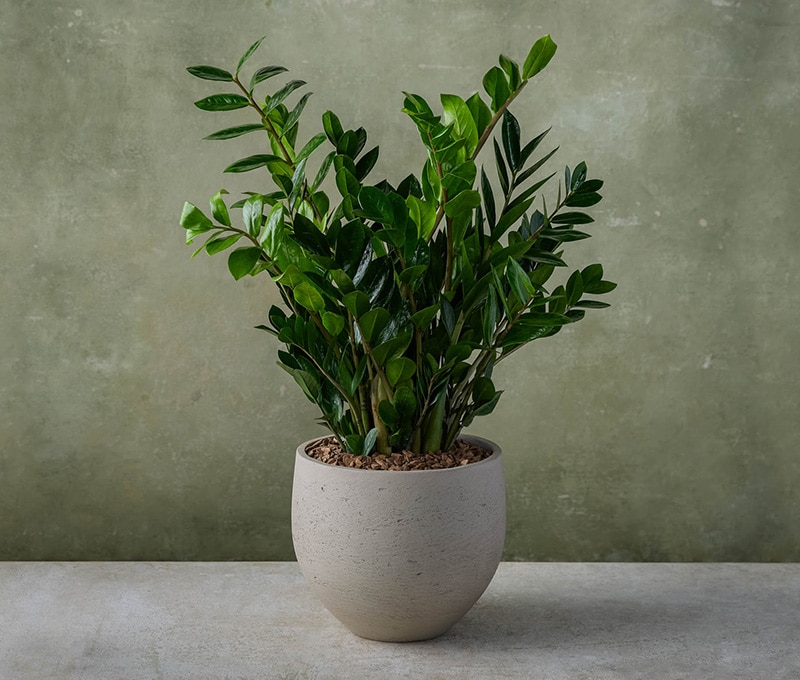Minimalist shelving isn’t about owning very little—it’s about editing with intent. Your goal is calm, legible shelves that show books first and give a few objects room to breathe. Below is a step-by-step playbook with specific ratios, simple rules of thumb, and maintenance habits—plus citations where research or expert consensus informs the advice.1, 2, 11
1) Pick a focus and a ratio (so shelves don’t feel “decor-heavy”)
Decide what each bay or shelf leads with—books, a single artwork, or a plant—and keep a simple ratio. For minimalist book-first styling, try: ~70% books, 20% negative space, 10% objects. Prioritizing negative space is a professional styling technique that makes shelves read calmer and more intentional.1, 2
2) Use the “Rule of Thirds” and triangles to place objects
Apply the Rule of Thirds from visual design: mentally divide the shelf width into thirds and aim key items at those intersections. Group small objects into a triangle (tall–medium–low) so they read as one tidy unit instead of clutter.12
3) Set a palette: 60/30/10 keeps it cohesive
Pick one base tone (e.g., natural white oak), one secondary (linen, off-white, or soft gray), and an accent (oxidized brass, black, or a single plant green). Use them at roughly 60% / 30% / 10% so the shelves feel consistent top to bottom. This also makes books with bold spines pop without chaos.11
4) Arrange the books (clear choices beat “perfect” systems)
- By category + height is the most usable for readers. Add a few horizontal stacks to break long runs and create easy bookends.10
- Spine-out vs. color sort: Spine-out is fastest to find; color sort is graphic but can bury titles. Choose clarity over novelty if you actually reference your books often.10
- Dust jackets: If you remove them for a cleaner look, store jackets flat, cool, and dry; they protect books and retain value.7, 8
5) Add plants—carefully (light matters more than looks)
Greenery softens hard lines and adds movement. But pick species that match your light. For low-light shelves (north-facing rooms), consider cast-iron plant, ZZ plant, or aglaonema.4, 9 Keep foliage within the shelf depth so it doesn’t snag and use saucers to protect wood.

6) Light the shelf (warm bulbs, focused beams)
Use 2700–3000K “warm” bulbs for living spaces; they flatter wood tones and create a relaxed feel. Layer a soft ambient source with a small picture light or puck to highlight one object per bay.5, 6
7) Care & preservation (so “minimal” doesn’t mean “fragile”)
Keep books cool, dry, and out of direct sun. Good home targets: around 70°F/21°C and ~30–55% RH with minimal fluctuation; avoid radiators, damp exterior walls, and direct UV. Stability protects bindings and paper from brittleness, warping, and mold.7, 8, 9
8) Edit monthly (what gets messy, gets managed)
Every 4–6 weeks, sweep each shelf: remove strays, dust, return to the 70/20/10 ratio, and rotate one object or plant to keep things fresh. If you add something new, remove something old.
Shelf-by-Shelf Checklist (use or adapt)
| Element | Target per 30–36" shelf | Size/Measurement | Notes |
|---|---|---|---|
| Books (primary) | ~70% of width | Stagger heights; 1–2 short horizontal stacks | Favor spine-out for usability; keep any stack ≤10" |
| Negative space | ~20% of width | 8–12" gap per shelf | Shift left/right each shelf for rhythm1 |
| Decor object(s) | 1 group (triangle) | Tall–medium–low | Place on Rule-of-Thirds “hot spots”12 |
| Plant (optional) | 0–1 per shelf | Within shelf depth | Match species to actual light4, 9 |
| Lighting (optional) | 1 focal per bay | 2700–3000K | Warm color temp suits wood & evenings5 |
Suggested video
For a quick visual primer on shelf composition (triangles, grouping, and spacing), this designer tutorial is clear and practical: “5 EASY Interior Designer Tips for Decorating Shelves Like a Pro”.12
FAQs
1) How much empty space should I leave on each shelf?
Aim for roughly 20% negative space overall, or about 8–12 inches of clear width per 30–36" shelf. It calms the composition and highlights the items you keep.1, 2
2) Is it okay to put plants on shelves with low light?
Yes—just pick species that tolerate low light (e.g., cast-iron plant, ZZ plant, aglaonema). Make sure pots fit within the shelf depth and use saucers to protect wood.4, 9
3) What color temperature bulbs look best on wood shelves?
Use 2700–3000K warm bulbs. They flatter wood tones and create a relaxed feel; cooler bulbs (4000K+) can look clinical in living areas.5, 6
4) Should I remove dust jackets for a cleaner look?
You can, but store jackets flat in a cool, dry place so you don’t damage or lose them. Jackets protect books and matter for resale and longevity.7, 8
5) Is organizing by color a bad idea?
It’s photogenic but can reduce findability. If you reference your books often, organize by category + height first, then add a few color blocks for softness.10
6) How do I keep shelves from looking “decor-heavy”?
Use the 70/20/10 ratio (books/empty/objects), place objects on Rule-of-Thirds points, and group small items into triangles so they read as one unit.1, 12
7) What if my shelf heights are fixed and some books are too tall?
Consolidate oversize books on one lower shelf and lay a few horizontally to create a stable bookend. Keep any single stack under ~10" tall for proportion and stability.
8) Can sunlight damage my books?
Yes. UV and heat can fade bindings and embrittle paper. Keep books out of direct sun and away from radiators or damp exterior walls; target stable temperature and humidity.7, 9
9) What’s a simple monthly maintenance routine?
Dust, return to the 70/20/10 ratio, rotate one object or plant, and re-shelve strays. If something new goes in, remove something old.
10) How many decorative pieces per shelf is “too many”?
For minimalist styling, cap at one grouped vignette (a triangle) per shelf. More than that reads busy. Use empty space to let items breathe.1, 11
11) What’s better for display: vertical rows or horizontal stacks?
Do both. Keep most books vertical for legibility, then add 1–2 short horizontal stacks as visual breaks and to act as built-in bookends.10
12) Do I need special humidity control?
Not special equipment—just consistency. Around 30–55% RH and a stable, cool environment helps prevent mold and warping. Avoid basements/attics if possible.7, 8, 9
Citations
- Architectural Digest — “8 Expert Tips for Styling Surfaces in Every Room.” Link
- Architectural Digest — “Why ‘Bookshelf Wealth’ Is 2024’s First Major Design Trend.” Link
- Royal Horticultural Society — “Best houseplants for dark and shady rooms.” Link
- Royal Horticultural Society — “Houseplants for shade” (RHS Urban Show profiles). Link
- ICON (Institute of Conservation) — “Books: Caring for your collections.” Link
- AD Middle East — “Styling Shelves: Your Expert (Five-Point) Guide.” Link
- Interaction Design Foundation — “The Rule of Thirds: Know Your Layout’s Sweet Spots.” Link
- Library of Congress — “Storing Your Books (Preserving Your Books).” Link
- University of Chicago Library — “Caring for Your Books.” Link
- Apartment Therapy — “11 Clever Bookshelf Decor Ideas for Every Style.” Link
- YouTube — “How to Style Shelves Like a PRO.” Link
- The Spruce — “Warm Lighting Basics You Should Know” (2700–3000K guidance). Link
- Architectural Digest — “The Integral Rules of Good Lighting.” Link

